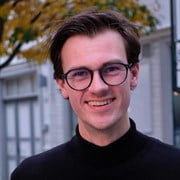But this all depends on the success of a project called Nutricycle, currently being carried out by researchers at SINTEF Nord, the Norwegian Institute of Bioeconomy Research (NIBIO) and the vegetable growers Columbi Farms. The project is based on circular economic principles. Fish excrement and feed residues from salmon smolt production facilities operated by the company Salmar will be converted into a nutrient-rich fertiliser that offers a superfood for plants.
“In the Nutricycle project, we’re developing a technology by which nutrient salts from salmon hatcheries are extracted and used as fertilisers in vertical vegetable farming facilities”, says SINTEF researcher Didrik Ulleberg. “We get to kill two birds with one stone. We reduce discharges of the salts from land-based aquaculture and use them instead to promote local food production”, he says.
Salmar’s hatchery tanks contain millions of salmon smolt. The water in the tanks also contains both feed residues and fish excrement, which means that it has to be changed on a regular basis. So, according to Ulleberg, the Nutricycle project offers a ‘win-win’ opportunity both for the salmon farming sector and the vegetable growers.
In the Salmar facility, the water undergoes a series of filtering processes. The first of these removes the greater part of the feed residues and sludge, which will be converted into biogas.
The water is then conducted in pipes to the Columbi Farms facility, where any remaining nutrients are removed from the water. Nitrates, phosphorous and potassium are valuable resources that can be extracted from fish excrement and used to provide nutrients for the healthy growth of green vegetables. Finally, the clean water is pumped back into the hatchery tanks.
The fertiliser will be used to cultivate vegetables in a so-called vertical farming system, where the plants grow on stacked shelves built into high towers, fed with nutrient-rich water and illuminated by LED lamps. This cultivation method makes pesticide use unnecessary.
SINTEF’s dual role in the Nutricycle project has been firstly to develop a system that separates the nutrient salts from the hatchery tank water and secondly, to identify the optimal composition of these salts that ensures that the plants obtain the maximum possible benefit from the available nutrients. The system will be tested as part of a pilot project to be carried out at NIBIO Landvik near Grimstad in Agder. The project is being funded by the Research Council of Norway.
Details of this project were first published by the E24 online news agency.


